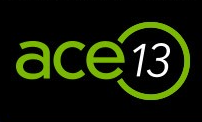Just returned from the 2014 International MUSE (Medical Users Software Exchange) Conference in Dallas. MUSE is a community of Meditech users and partners, and this year’s conference was attended by 683 users from 186 hospitals and 538 representatives from 131 vendors. Although attendance was down from last year’s event in Washington, DC, everyone I spoke with thought the conference was useful
The MUSE conference is a great window into the issues facing the Meditech user community. With at least 1,200 hospitals that use three different versions of the Meditech EMR 6.X, Client Server, and Magicit’s always a spirited conversation. The Meditech corporation maintains a presence at MUSE, but it doesn’t stage manage the event the way some other EMR vendors do their user group meetings.
Discharge 1-2-3 demoed our newest version of discharge instructions that integrates with Meditech Magic. We also enjoyed visiting with existing clients and partners and meeting new ones. A highlight of the week was a visit to long-time customer Cook Children’s in nearby Fort Worth. Cook Children’s uses Discharge 1-2-3 software with its Meditech Client Server system.
Dr. Chris Galassi at Cook Children’s
Here are some high-level take-aways from this year’s MUSE:
- Many Meditech users expressed the opinion that Meditech’s existing PDI system could be improved upon. We heard a number of comments about the inability of a clinician to customize on the fly and the quality of some content.
- Meditech shared their strategic vision of the future, which includes being cloud hosted and web-centric and improved content management. Management also made it clear that they understand they don’t always have the best solution for every situation and they are increasingly collaborating with partners and third-party vendors.
- The move towards pay for performance is entering a crucial phase as Accountable Care Act incentives wind down and potential penalties ramp up. Including Readmissions, VBP, HAC, and MU, hospitals will soon have 7% of their Medicare revenues at risk. MU criteria that seem to have been particularly difficult to attest to include CPOE and patient portal.
What were your take-aways from MUSE?
Thanks,
Hugh Martin
hmartin@discharge123.com







![emergency_room[1]](http://www.discharge123.com/wp-content/uploads/2013/05/emergency_room1.jpg)




